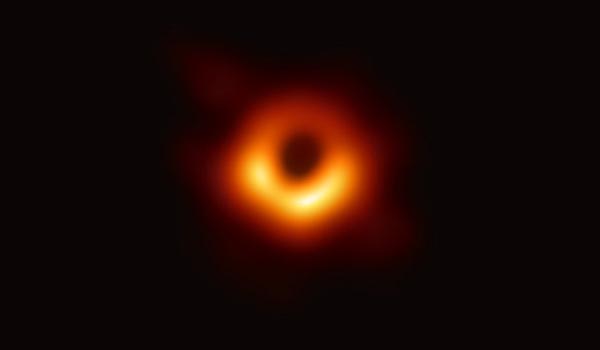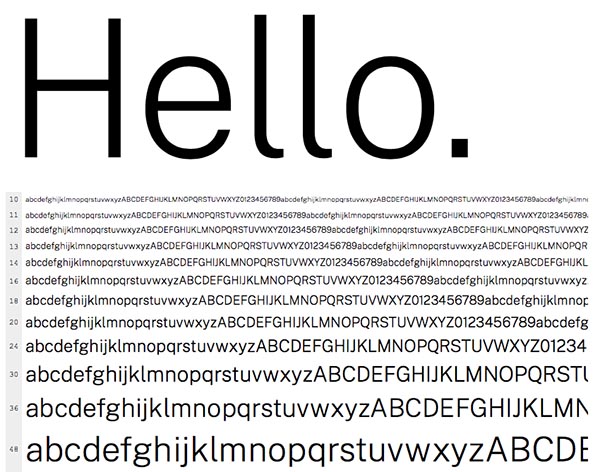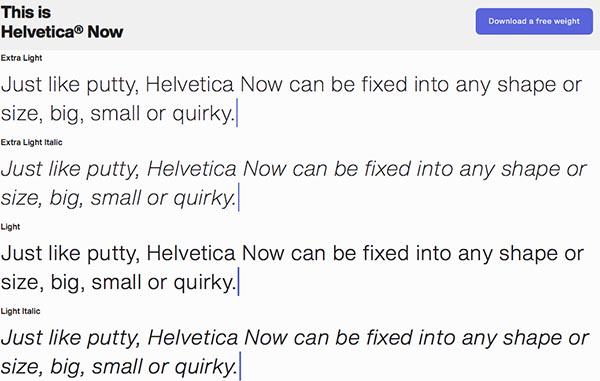The Textile Industry: Behind the Seams
NCTO is a Washington, DC-based trade association that represents domestic textile manufacturers. It's Chairman, Marty Moran, recently reported on the current state of the textiles industry in the U.S.:
- U.S. employment in the textile supply chain was 594,147 in 2018.
- The value of shipments for U.S. textiles and apparel was $76.8 billion in 2018.
- S. exports of fiber, textiles, and apparel were $30.1 billion in 2018.
- Capital expenditures for textile and apparel production totaled $2.0 billion in 2017, the last year for which data is available.
Flush with Success
Researchers at Rochester Institute of Technology have developed a smart toilet seat that can monitor the symptoms of congestive heart failure while you're on the loo.
— Quite Interesting (@qikipedia) April 9, 2019
Keepin’ It Reel
Thread is so often overlooked! It's a key element of knit/sew/embroidery, and until recently, there has been little real innovation and a huge amount of waste in the thread supply chain. That's now changing with things like dyeing thread on demand and embedding graphene in thread/yarns to create technical materials with many benefits. Kudos to Coats for planning to open three Innovation Centers dedicated to thread!
Attn: Dept. of Irony
Hey, #historiansontwitter -
— Charles P. Pierce (@CharlesPPierce) April 6, 2019
This is one of my favorite USPS things ever.
The Repeal Of The Stamp Act commemorative...stamps. pic.twitter.com/WPvRAXAafg
Throne for a Loss
Even if you’re not a Game of Thrones fan, who wouldn’t want to have a giant paper dragon in their home or office? Watch one get made here.
A Singular Singularity
Touts les Nets were a-Twitter this week (and rightfully so) over the first-ever photograph of a black hole.

From Sky & Telescope:
Capturing a black hole’s visage requires far more than just a point-and-shoot approach. The worldwide team of researchers, comprising 200 people from some 20 countries, constructed the black hole’s image using a technique called very long baseline interferometry (VLBI). VLBI combines the data from multiple radio telescopes scattered across the globe to create a virtual, Earth-sized dish, with a resolution equivalent to being able to read the date on a quarter in Los Angeles seen from D.C., Doeleman said.
Think of the old joke about a bunch of blindfolded scientists studying different parts of an elephant — one finds an ear, another the tail, and so forth. With VLBI, each blindfolded scientist represents the distance, or baseline, between two telescopes. But instead of sampling different body parts, each baseline observes a different scale of the elephant: One says it’s 10 feet high; another says there’s an ear here of such-and-such size; still another explores the fine texture of the elephant’s skin. As Earth turns, the baselines change, detecting different scales of the elephant. The scientists then piece these bits of information together into a coherent image.
Here is the image of the black hole in M87, and at the press conference the Event Horizon team just said it is precisely as predicted by General Relativity. Einstein right again - wouldn’t he have loved to see this! https://t.co/VzkTLWC58D
— Brian Cox (@ProfBrianCox) April 10, 2019
The development of the software that created that first-ever image of a black hole was led by 29-year-old computer scientist Katie Bouman, who began making the algorithm three years ago while she was a graduate student at MIT.
Left: MIT computer scientist Katie Bouman w/stacks of hard drives of black hole image data.
— MIT CSAIL (@MIT_CSAIL) April 10, 2019
Right: MIT computer scientist Margaret Hamilton w/the code she wrote that helped put a man on the moon.
(image credit @floragraham)#EHTblackhole #BlackHoleDay #BlackHole pic.twitter.com/Iv5PIc8IYd
Some Type of Week
There was a greater than usual amount of typography news this week. We begin in India, where Mumbaikers are striving to preserve the city’s architectural heritage. “And,” says The Guardian, “rising in the margins of this surge is a slow revival of interest in fading forms of typography and signage as a key part to the city’s history.”
Wistful accounts such as Aditi Khandelwal’s Bombay Type Project record all manner of old Mumbai typography. @Artdecomumbai’s account of genteel Bombay buildings is liberally sprinkled with photographs of art deco signs (including the delightful Rivendell House), while photographer and chronicler of the city Gopal MS (@Mumbaipaused) has been charting #oldbombaytype since 2013. And Typography Day, organised by the IDC School of Design at the Indian Institute of Technology Bombay, has been talking about type, both old and new, since 2008.
One of those taking up cudgels on behalf of this history is type designer and typographer Tanya George, who takes enthusiasts on typography-spotting walks through the time-weary streets of Fort, once the beating heart of business and commerce in old Bombay. George points out moribund signs lying dog-eared with neglect, others eroded into ghost signs, and jarring, charmless modern signboards.
Much of Mumbai’s signage and other display graphics are still hand-painted and -constructed, such as this subway sign:

Meanwhile, here in the US, the United States Web Design System has developed a free/open font called Public Sans, billed as “A strong, neutral typeface for text or display.”

But if you’re a traditionalist, there’s no tradition like a new tradition: Helvetica Now (perhaps to be shouted à la Frank Constanza’s “Serenity now!”), designed by Max Miedinger, Charles Nix, and Jan Hendrik Weber, et al., for Monotype, is the first revision of the classic typeface in 35 years.

Finally, over at Vox, a look at how au courant brands like Chobani and Glossier are reviving 1970s-style typefaces—even Frank Romano’s old nemesis, Souvenir (“the Comic Sans of the 1970s”).
Branding trends always exist in relation to what came immediately before; aesthetics are a powerful way for a company to stand out from its competitors, and once a particular look reaches oversaturation, it’s time to move on. Particularly in the startup space, the early 2010s were absolutely dominated by sans serifs and minimalist design, a trend that was itself a reaction to the chaotic typography of the 1990s. Now that the simple, utilitarian look has run its course, companies and branding agencies are turning to fonts with a more expressive, human feel.
Many of the typefaces that we associate with the ’60s and ’70s were actually created decades before, though they’re informing the present-day design landscape because of how they were used in the ’70s. Consider the typeface Windsor, which was crafted in 1905 and, according to the Font Review Journal, had its heyday between the 1960s and ’80s. It was famously used on the cover of the counterculture magazine the Whole Earth Catalog and in Woody Allen’s film titles, including 1977’s Annie Hall. Cooper Black was released in 1922, but in the ’60s and ’70s it made notable appearances on album covers from The Doors, Curtis Mayfield, and The Beatles.
Too Many Peeps
OK. We had this discussion on Valentine’s Day. This is now almost Easter and there is no excuse for this. pic.twitter.com/Diu1yH9LhI
— Charles P. Pierce (@CharlesPPierce) April 10, 2019
“There Are Known Unknowns...”
Tired of that know-it-all Wikipedia having all the occasionally accurate answers to life’s questions? Check out Wikenigma, an “encyclopedia of unknowns.” Wha?
To pick one, er, random example, random numbers: “We can never decide for sure that a number is random, but what we can do is apply an increasing number of tests and treat our sequence of numbers as innocent until proved guilty.”
Another example is the entry on catnip: “Although many of the active-ingredient chemicals (e.g. Nepetalactone) have been identified and isolated, no-one has any idea why they affect felids in the ways they do.”
Be sure to consult it often when you don’t want answers to specific questions. Kind of like Wikipedia, in a way...
When the Old Music’s Over
Here’s a bit of clickbait from the BBC: “Old music tech people under 30 wouldn’t understand.” Cassette head cleaners? 8-track tapes? The Walkman? Yeah, kind of a cute, nostalgic roundup for those of us who had these items back in the day. But then 30 years ago you could identify music (or any) technologies that people who were under 30 back then wouldn’t understand (wax cylinders? 78s? phonautograms?). So it goes.
Authoring by the Book
Uh oh: machine-authored books are nothing really new, especially if you’re a James Patterson fan (kidding...), and many auto-generated ebooks are available on Amazon. And while they are generally unreadable, Springer Nature has published the first “autobook” that was written using an algorithm using machine learning. Says Gizmodo:
The algorithm, which was developed by AI researchers at the Applied Computational Linguistics (ACoLi) lab at Goethe University in Frankfurt, Germany, was not designed to replace authors like John Grisham or J. K. Rowling. As is probably evident by its title, Lithium-Ion Batteries: A Machine-Generated Summary of Current Research (which can be freely downloaded here) doesn’t feature interesting characters, snappy dialogue, or a thrilling plot. As far as we know, Hollywood studios have no plans to option it as next summer’s blockbuster. Instead, it’s an attempt to distill and condense the extensive research being done on lithium-ion batteries.
Fortunately, such machine-authoring has yet to some to trade publishing.
—WhatTheyThink Writing Unit #807
Scamming the Scammer
Give how many robocalls, spam, and outright scammy messages we get across all media, this could be the great new pastime of the 21s century: having fun with scammers. (Some of us used to similarly twit telemarketers back in the day.) From The New Yorker:
Recently, the screenwriter Ed Solomon (“Men in Black,” “Bill & Ted’s Excellent Adventure,” and the upcoming “Bill & Ted Face the Music,” among others) received a Facebook message from the account of a friend. He quickly realized that the friend’s account had been hacked by a scammer, but he decided, out of curiosity, to keep the exchange with the scammer going. What follows is the actual transcript of their conversation. (The friend’s name has been changed.)
It’s worth clicking through and reading...and that’s not a scam!
The Real Lion King
Finally, for your weekend entertainment, over at Boing Boing, an “amateur” production of The Lion King featuring regular cats.
This Week in Printing, Publishing, and Media History
April 8
1820: The Venus de Milo is discovered on the Aegean island of Milos, which archaeologists found disarming.
1904: Longacre Square in Midtown Manhattan is renamed Times Square after The New York Times.
1942: American director, producer, and special effects artist Douglas Trumbull born.
1947: Mood for a day: English guitarist, songwriter, and producer Steve Howe born.
1959: A team of computer manufacturers, users, and university people led by Grace Hopper meets to discuss the creation of a new programming language that would be called COBOL.
April 9
1830: English photographer and cinematographer Eadweard Muybridge born.
1860: On his phonautograph machine, Édouard-Léon Scott de Martinville makes the oldest known recording of an audible human voice. In 2008, researchers at the Lawrence Berkeley National Laboratory in Berkeley, Calif., did successfully convert a “phonautogram”—“squiggles on paper,” essentially—recorded in 1860 to a digital audio file. It was a 10-second clip of a singer, possibly female, warbling “Au clair de la lune.” It is believed to be the earliest known sound recording, preceding Thomas Edison’s attempts by almost two decades. (Poor Charlotte Green, BBC Radio 4’s newsreader, who played the restored phonautogram on her broadcast, but was unable to get through the next story—alas, an obituary—without cracking up.)
1898: American singer, actor, and activist Paul Robeson born.
1928: American singer-songwriter, pianist, and mathematician Tom Lehrer born.
1959: NASA announces the selection of the United States’ first seven astronauts, whom the news media quickly dub the “Mercury Seven.”
1965: Astrodome opens; first indoor baseball game is played.
April 10
1710: The Statute of Anne, the first law regulating copyright, comes into force in Great Britain.
1847: Hungarian-American journalist, publisher, politician, and founder of Pulitzer, Inc. Joseph Pulitzer born.
1925: The Great Gatsby by F. Scott Fitzgerald is first published in New York City, by Charles Scribner’s Sons.
1934: American journalist and author David Halberstam born.
April 11
1976: The Apple I is created.
April 12
1932: American singer and ukulele player Tiny Tim (né Herbert Khaury) born.
1981: The first launch of a Space Shuttle (Columbia) takes place: The STS-1 mission.
1990: Jim Gary’s “Twentieth Century Dinosaurs” exhibition opens at the Smithsonian Institution National Museum of Natural History in Washington, D.C. He is the only sculptor ever invited to present a solo exhibition there.
1992: The Euro Disney Resort officially opens with its theme park Euro Disneyland; the resort and its park’s name are subsequently changed to Disneyland Paris.
April 13
1742: George Frideric Handel’s oratorio Messiahmakes its world-premiere in Dublin, Ireland.
1743: American lawyer and politician, 3rd President of the United States Thomas Jefferson born.
1860: English-Belgian painter James Ensor born.
1870: The New York City Metropolitan Museum of Art is founded.
1899: American architect, game designer, and creator of Scrabble Alfred Mosher Butts born.
1901: French psychiatrist and academic Jacques Lacan born.
1923: Would you believe...American actor and director Don Adams born.
1906: Irish novelist, poet, and playwright, Nobel Prize laureate Samuel Beckett born.
1960: The United States launches Transit 1-B, the world’s first satellite navigation system.
1974: Western Union (in cooperation with NASA and Hughes Aircraft) launches the United States’ first commercial geosynchronous communications satellite, Westar 1.
April 14
1629: Dutch mathematician, astronomer, and physicist Christiaan Huygens born.
1828: Noah Webster copyrights the first edition of his dictionary.
1894: The first ever commercial motion picture house opened in New York City using 10 Kinetoscopes, a device for peep-show viewing of films.
1939: The Grapes of Wrath, by American author John Steinbeck is first published by the Viking Press.















Discussion
Only verified members can comment.